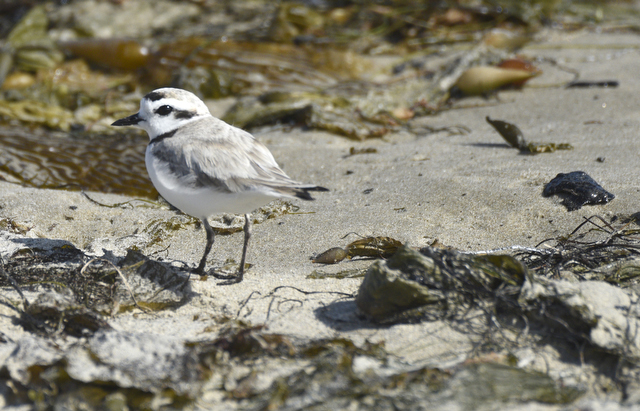Official Refugio Cleanup Order Issued
Enforceable Work Plan Required; Cleanup Includes Plover Reserve

From the air, the land near the broken oil pipeline at Refugio resembles a parking lot of bins containing thousands of cubic yards of oil-soaked sand, soil, and vegetation. The owner of the ruptured crude transport line, Plains All American Pipeline, today received an official order from the Environmental Protection Agency and Coast Guard (also called the Unified Command) requiring Plains to continue its ongoing cleanup work at all areas where oil and petroleum contamination has occurred until a work plan is written. The plan is to be submitted by June 6 and include sampling and analyzing the air, water, rocks, and soil. The order also states that Plains will ensure that no more oil escapes into the environment.
Since the rupture of the pipeline on May 19, about 2,610 cubic yards of oiled soil, 760 cubic yards of oiled sand, and 310 cubic yards of oiled vegetation has been removed, according to the Unified Command. About 2,240 feet of hard boom and 1,840 feet of sorbent boom have been used so far in the ocean cleanup; the skimming operation has scooped up 10,060 gallons of oily water. About 938 individuals are involved in the oil removal effort, including 20 volunteers at Goleta Beach of the 100 or so that have been trained. Among the wildlife known to be affected, 33 birds are being treated, and 16 dead birds have been found. Eighteen mammals are in care, and nine have been found dead.

The nesting spot of a threatened species, the snowy plover, at the Coal Oil Point Reserve to the west of Isla Vista has been scrutinized for oil almost nonstop by university staff and scientists since the spill, according to UCSB Public Affairs. The plovers “nest around high tide, just a few feet above where oil has been deposited,” said the reserve director Christina Sandoval. “We need to remove that oil because the plovers are getting tar on their wings and hair. Almost all of them have little black boots because their feet are black from oil. They’re getting oil in their beaks because they go peck to try to get the beach hoppers around the kelp, and the kelp is tarred.” The birds’ nesting season runs mid-March to mid-September, and reserve docents have traditionally spent their days keeping people away from the nest sites and answering questions. Several students trained as members of a Community Emergency Response Team are working with professional cleanup crews, not only removing tarry clumps but also ensuring clean kelp is left as habitat for the birds’ main food source, sand flies.
“The entire beach habitat is a very sensitive place,” Sandoval said. “There’s a really thin line between the aquatic habitat that is the ocean and the land. We don’t have that much beach to begin with, and on top of that, most beaches have been degraded to the point that almost nothing is living in there. A place like Coal Oil Point, where the beach is still as pristine as it gets, with all the native species of plants and animals, is hard to find. So the impact of an oil spill is not just on the plovers, but on the entire beach ecosystem.”


